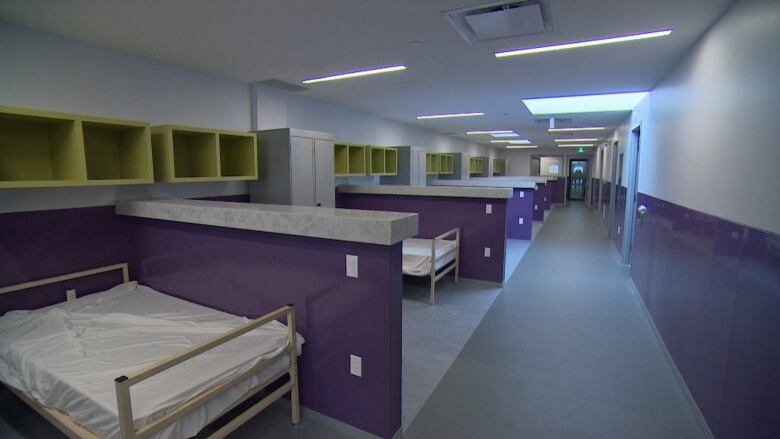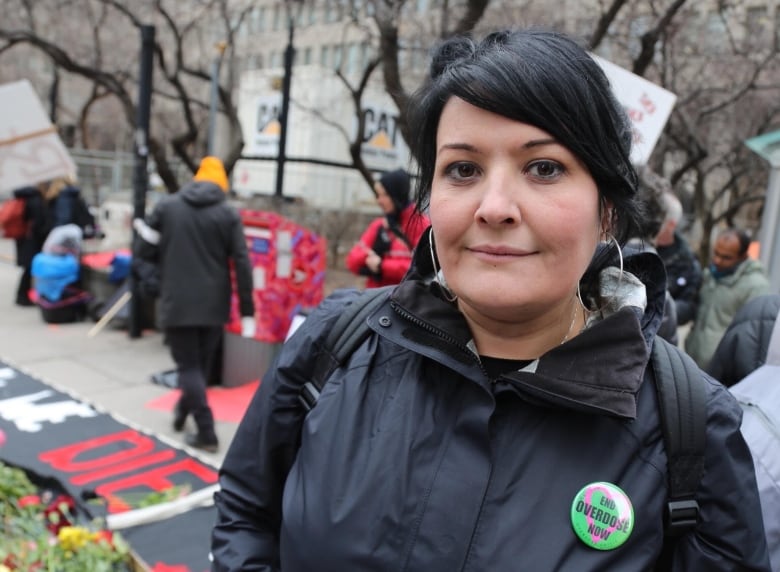Shared dorms in Toronto shelters put users at risk of airborne COVID-19 transmission, critics warn
Airborne particles containing the novel coronavirus can stay afloat for hours indoors

The City of Toronto's continued operation of homeless shelters with shared sleeping areas defies widespread acknowledgement that COVID-19 can effectively spread via airborne transmission, say health experts and advocates for people experiencing homelessness.
There are concerns that shelter users sleeping in those environments face a heightened risk of transmitting or contracting the novel coronavirus.
"We should be deeply concerned that shelters are still being operated like this,"said Zoe Dodd, who works with Toronto's homeless population through the Overdose Prevention Society.
Aerosol transmission of COVID-19, in which the virus spreads through microscopic airborne particles, has been acknowledged as a threat by Toronto Public Health.
The U.S.Centers for Disease Control notes in its guidelines that aerosols containing the virus can stay afloat for hours, in some cases leading to COVID-19 transmission even when people are more than two metres apart.
Jeffrey Seigel, an engineering professor at the University of Toronto, called the prospect of aerosol COVID-19 transmission in homeless shelters "a critical issue" that the city shouldimmediately address.
He said similar congregate settings, such as the living quarters of farm workers and some long-term care facilities, indicate that aerosol transmission can be a dangerous driver of COVID-19 outbreaks.
"A substantial amount of transmission is happening in some spaces because of long range aerosol," Siegel told CBC Toronto.
He identified three factors that can increase the risk of transmission when people gather indoors: crowding, the amount of time spent in a location, and ventilation.
The environmentin congregate homeless shelters, he said, "hits two, maybe three of the high-risk triggers for COVID-19 transmission."

City says shelter precautions working well so far
Toronto has revamped itsshelter system since the onset of the pandemic and now offers thousands of private rooms in hotels and motels. However, congregate spaces still make up a significant portion of the more than 6,000 bedsoffered by the city.
As many as 2,874 spaces reserved for individual users are in congregate dorms, the city said, though it did not provide a specific figure.
The city has introduced heightened physical distancing measures in those shelters, including a standard of two metres of lateral space between beds, among other precautionary measures.
Mary-Anne Bedard, general manager of Toronto's Shelter, Support and Housing Administration, said those changes have contributed to the city's "relative success" at slowing the spread of the virus within its shelter system.
"While there is a certain amount of aerosol transmission it is relatively limited," said Toronto Medical Officer of Health Dr. Eileen de Villa during a Monday news conference, before adding that close contact between people remains the primary source of transmission.
But Siegel said people underestimate the risk of aerosol transmission in a shared, indoor environment. He said particles containing the virus have been demonstrated to travel more than 10 metres in some cases, and that dry winter air can help those particles travel more easily.

"I have to honestly say that, no, two metres is not enough. I often say that physical distancing indoors is fiction," he said.
There have been 659 cases of COVID-19 among shelter users over the course of the pandemic, though it is unclear how many of those infections took place within shelters.
Calls for more private rooms, or other mitigating solutions
Siegel said solutions such as increased ventilation, the use of portable air purifiers or germicidal ultraviolet lights could be introduced within shelters to mitigate the risk of transmission.
He said those measures could be beneficial even after the COVID-19 pandemic, since infectious respiratory diseases are a long-standing issue within homeless shelters.
Dodd and other homeless outreach workers are calling for a more substantial change, and say the city must open at least 2,000 new hotel roomsand stop operating shelters with shared sleeping areas andwashrooms.
Ginger Dean, an outreach worker with the Encampment Support Network, said a lack of private shelter spaces means people will choose to stay outdoors this winter rather than risk sleeping in a potentially unsafe shelter.
"Most people aren't interested," she said of the congregate dorms.
"It sounds harsh, but I feel like it just leaves residents feeling like the city doesn't really care about them."












_(720p).jpg)


 OFFICIAL HD MUSIC VIDEO.jpg)
.jpg)



























































































